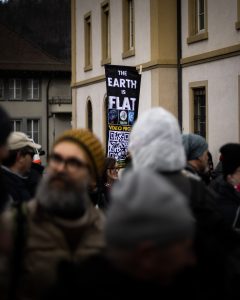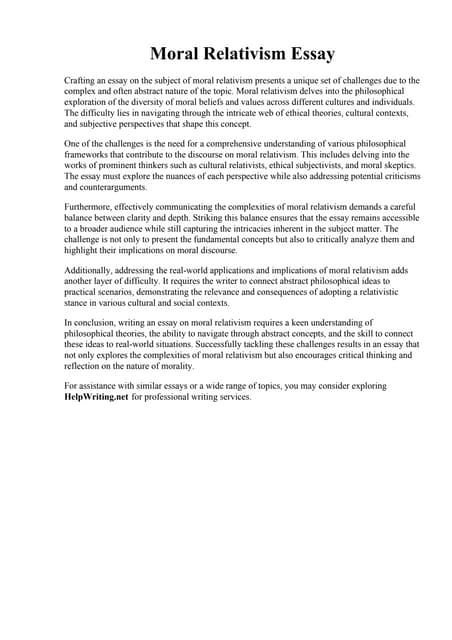I have been in APA administration for 25 years. In January of 2000, I began an 18–month term as acting executive director. Shortly after leaving that position, I was recruited to be secretary-treasurer of the Eastern Division, a position in which I served from 2003–2013. Since then I have held the position of vice chair of the board of officers, which—although much less involved with the day-to-day running of the association—does require regular consultation with the chair of the board, the executive director, the secretary-treasurers, and other members of the board.
Things were very different when I started in these roles. Although in 2000 email had existed for some time, and the sending of attachments was already becoming routine, almost all the APA’s business was still conducted by traditional mail. Papers submitted for presentation at divisional meetings were mailed (two or maybe three copies each, I don’t exactly remember) to the Administrative Office (then known as the National Office) at the University of Delaware. These were collected and sent out in multiple large boxes to the Program Committee chair of the relevant division. (I once spoke with a former Program Committee chair who recalled receiving “just a sh__load of papers” in this fashion.) This individual would assign the papers to Program Committee members, sort them, and then mail them out again—in smaller but still substantial packets—to individual members. The Program Committee would convene some weeks later, having read the papers, and hold an in-person meeting to decide which papers to accept on the program. For advance registration, the APA didn’t accept credit cards; you had to mail a check to the Administrative Office with a paper form. Elections, too, happened by mail, using multiple different cards, one for each position; the secretary-treasurers would then count the ballots by hand and then mail a summary of the results to the candidates. Some of these things were updated sooner than others—electronic submission of papers began around the mid–2000s—but they were not all brought into the modern era until a little over ten years ago.
The philosophy that goes on at the meetings has also evolved considerably in the last quarter-century. When I began as Eastern Division secretary-treasurer, there was still an echo of the Pluralist Revolt of the 1980s, when a significant number of members organized to try to transform the almost exclusively analytic flavor of the meetings over much of the second half of the twentieth century. During this era, I was told, Program Committee meetings could drag on for many hours and become quite hostile. By the time I took over, the pluralists had had some success and the Program Committee meetings were always amicable; everyone agreed that there should be a variety of approaches and traditions represented in the programs. But “variety” was also starting to be understood in new dimensions, and in the intervening years there has been a major increase in sessions featuring philosophers and methodologies other than white, male, and either traditionally analytic or traditionally continental. One aspect of this, though not the most prominent, is the greater inclusion of non-Western philosophies on the divisions’ programs (although these were always well represented in sessions of the many affiliate groups that also hold sessions at the meetings). But a more obvious aspect has been the great increase in sessions by or about (current or previously neglected historical) philosophers of color, women philosophers, and transgender philosophers. As Naomi Scheman (herself an important figure in this transformation of the field) remarked in her 2025 Eastern Division Dewey Lecture, there was more than one such session in every single time slot in the 2025 Eastern Division program. This would have been unimaginable at the turn of the millennium, and it makes APA meetings better at doing what they are supposed to do: advancing our philosophical understanding through constructive dialogue across the entire spectrum of our very diverse field, and thus helping us to contribute better to the society in which we find ourselves—which, in the most general terms, is what I take the APA to be about.
Speaking now just of the Eastern Division—which I ran for ten years—another major difference is that the Eastern Division meeting used always to be held from December 27–30, and was the near-universal forum for interviews for entry-level jobs in the profession. The rationale for these dates was that they were the only dates on which everyone, whether they were on semesters or quarters, with whatever permutations of each, was guaranteed not to be in session. The dates were a widespread source of discontent, being considered anti-family; the fact that it was dominated by job interviews also made the atmosphere far from congenial for many. For this reason, the other two divisional meetings were regarded as the fun ones, and the Eastern as the one that most people would attend only if they had to. On the other hand, since so many did have to attend, it was always much bigger than the other two, and over time became much wealthier. A significant advantage of the unfriendly dates for those running the meeting was that our leverage over the hotels where we met was pretty considerable; if you are the only organization who would contemplate meeting on certain days, you are in a very good position to dictate the terms that you want. (A number of other disciplinary associations, including the MLA and the Society for Classical Studies—then also called the APA, with the P being “Philological”—used to meet the same days as the APA Eastern, but we stuck to them for some years after the others had abandoned these dates.)
The change of dates and the demise of the Eastern as an interview site happened at roughly the same time, but there was no planned connection between them. The decision to change the date—or at least to consider it—came first, before we had any inkling that people would stop coming to conduct interviews. In a particular year, the Executive Committee (the committee with ultimate responsibility for the division) had enough members disgruntled with the December dates to prompt a survey of the membership. I asked some hotels for estimates of room rates at various different times of year that had been suggested as possible meeting periods, and this information was included in the survey. A good number responded and the result was clear: the most popular date, by some considerable margin, was early January (the same period chosen by the MLA and the SCS, among others). Interestingly, the second most popular dates were the late December dates we had always had; the lower cost was no doubt a major reason for this (cheaper room rates were one of the things we could bargain for on those unfriendly dates). The January dates are undeniably tough for those on the quarter system (as they coincide with the beginning of the winter term), but the numbers in the survey were decisive. Since the Eastern Division used to negotiate hotel contracts four or five years in advance, the change did not take effect for some time. The last December Eastern Division meeting took place in 2014 and the first January meeting in 2016, although the survey took place and we decided on the change around 2009–2010.
As I said, the decision to change the dates had nothing to do with interviews or the lack of them. However, by the time the Eastern Division started meeting in January, it had almost entirely ceased to be a place for interviews. From my perspective, this happened very suddenly, although there were factors at play that may have concealed what was actually going on. During the Great Recession, there were somewhat fewer job interviews than before. But the shift did not seem drastic, and the December 2009 meeting was a success; the fact that it was in New York, always the most popular venue, no doubt had something to do with this. In December 2010 we met in Boston and there was a blizzard. Not surprisingly, far fewer people attended the meeting than usual (and the hotel did not hold us financially responsible for this, as they could have). But the extent to which this was simply a function of the weather, and whether there might not have been fewer people coming there for interviews that year anyway, was not obvious, at least to me. The next year—the 2011 meeting was in Washington, DC, with no significant weather issues—the huge decline in interviews was clear, and we failed by a long way to fill our contracted block of rooms. We were on the hook for more than $100,000. I was able to negotiate this down to an amount that the Eastern Division (with its substantial accumulated wealth) was able to pay without difficulty, in exchange for making a contract for another meeting at the same hotel (with much lower projected numbers) a few years later. My last couple of years as secretary-treasurer were somewhat nerve-racking, being much occupied with negotiating down the numbers in previously signed contracts with the other hotels we were to meet in over the next few years. But it all worked out in the end—hotels don’t actually want to put out of business the organizations they host for large group meetings. (And it was not as if we were alone in experiencing reduced meeting attendance; the hotels were getting used to this.) By the time I stepped down as secretary-treasurer in 2013, the number of departments conducting interviews at the Eastern Division had shrunk to almost zero, and Eastern Division meetings now have more or less the same feel as the other two (except for an intangible matter of atmosphere that, in some people’s opinion, distinguishes the three divisions). The Eastern is in fact typically smaller these days than the Pacific.
The Eastern Division’s accumulated wealth has had another good effect. When I first took over as acting executive director, I recall long-time critics of the APA complaining that the Eastern Division was sitting on huge piles of money, which it could be using for the benefit of the profession. “Huge piles” turned out to be an exaggeration. But it was true that the division had invested funds that it was not using for anything in particular, and I thought the critics had a point; when I took over as secretary-treasurer I hoped to be able to do something about this. I waited a couple of years, until I was fully conversant with the division’s affairs, and I then approached the division’s president that year (Seyla Benhabib), who proved to be sympathetic to this cause. With the approval of the APA treasurer (Stephanie Lewis), we got the executive committee to approve an annual expenditure of $25,000, drawn from the investments, to be given to the board of officers to award in small grants for projects around the country that in various ways enhance the discipline of philosophy. This arrangement has been in place ever since, and a great many departments and other local organizations have benefited from it over the years.
Another thing that has changed since my first days as an APA officer is that the divisions are much more collaborative, with one another and with the Administrative Office, than used to be the case. When I was secretary-treasurer each division negotiated hotel contracts on its own. I opened a business account in my own name at my local bank to handle the division’s finances. I would regularly take home from the meetings several thousand dollars in cash in my briefcase (some of the revenue from on-site registration) to deposit into this account. Quite apart from the risks involved in all of this, the extreme autonomy of the divisions sometimes led to some friction. One example was the proximity: in some years, in the dates of the Central and the Pacific meetings, which may have led to lower overall attendance and which could be a nightmare for the Administrative Office staff who attend the meetings to handle registration, catering, and other behind-the-scenes matters that are essential to an efficient operation. On at least one occasion the two meetings took place only two weeks apart. (The contributions of the Administrative Office staff to the meetings and to the functioning of the APA in general deserve to be much better recognized. They do difficult, complicated, and very varied work with efficiency, dedication, and invariable good cheer. It has been an honor to know them and work with them.)
But the APA is (legally speaking and in the view of the IRS) a single entity incorporated in Pennsylvania, and a legal opinion sought by the chair of the board and the executive director in 2014 made very clear that greater integration was needed among the divisions and the national APA in order to guard against potential disaster. In response to this, it was decided to form a Divisional Coordination Committee (DCC), consisting of the three secretary-treasurers, the executive director, and two at-large members of the board of officers, and chaired by the vice chair of the board, which was the role I was occupying by that time. It took a couple of years of sometimes delicate negotiations, but by around 2016 or 2017, the finances of the entire APA were handled in a much more unified fashion and hotel contracts started to be handled collectively, with the executive director and all three secretary-treasurers working together. One benefit of this is that, if one is making multiple contracts at the same time, better deals are possible, most notably in the percentage of a contracted room block that has to be filled in order to avoid a penalty. (In my days in the Eastern Division the amount was typically 80 percent; I have heard of arrangements more recently with 60 percent or even 50 percent.) This has not eliminated all problems, and divisional meetings can sometimes fall short of expectations; but it has made whatever problems the APA does encounter much more manageable. While the secretary-treasurers and the executive director confer with one another all the time—and this is itself a product of this new era of collaboration—the full DCC now typically meets just once a year, at the start of the one annual in-person meeting of the board of officers, with occasional email (and more occasional Zoom meetings) to address anything urgent that comes up in between. The APA remains a peculiar beast; no other disciplinary association has three regional divisions, with no national meeting and no president of the association as a whole. But we are a lot more unified than when I came on the scene a quarter-century ago.
Since this year is the APA’s 125th anniversary, a quarter-century ago it was the APA’s centenary, and during my time as acting executive director I participated in several celebratory events. One of the most interesting was a trip to the University of Nebraska, where the first meeting of the Western Philosophical Association, the ancestor of the Central (formerly Western) Division, had been held in 1900. A plaque was unveiled and several of us made historically oriented speeches. (The forerunner of the Eastern Division—which, in an astonishing act of East-Coast bias, called itself the American Philosophical Association—first met in 1901.) I also attended a number of sessions at the divisional meetings where the APA’s history was discussed. James Campbell gave a series of talks that eventually resulted in a book, A Thoughtful Profession: The Early Years of the American Philosophical Associations (Chicago: Open Court, 2006); there were also reminiscences from older members, such as Lewis Hahn, who taught at Washington University in St. Louis and SIU Carbondale, and whose memory of the profession stretched far back into the twentieth century. Another initiative at this time was the republication, in ten volumes, each covering a decade, of the divisional presidential addresses of the first 100 years (edited by Richard Hull, and eventually published by several different presses; I am one of the, I suspect, very few people who has a print copy of all ten volumes). These include short biographies (along with photos) of each president, which are often fascinating. Just one example: how many of you knew that the columnist George Will is the son of a Central (then Western) Division president of the 1960s? Speaking of long memories: I cannot resist recalling a document I saw when working in the Delaware office. I have no recollection of how I came across it, but it was a budget from 1937. Included was this item: “Cigars and cigarettes for Iowa meeting.” When I started attending APA meetings in the mid-1980s, smoking at the large evening receptions was still permitted, and would continue to be for some time. I am pretty sure that by the time I entered APA leadership this had been discontinued, although (as many members will recall) the receptions continued to be called “smokers” for many years. I can only wonder for how many years the APA actually supplied the smoking materials.
I have found working for the APA an immensely educational experience. One gets a view of the whole profession that cannot easily be matched in any given department or within any given subfield. In all the roles I have had, I have met numerous interesting philosophers every year, almost all of them dedicated to the profession, as people rotate in and out of the various committees with which I have interacted. I also found negotiating meeting contracts (and interacting more generally with hotel management) very enlightening. In some cases I dealt with the same people over a number of years and got to know them quite well. It’s a world that, as a regular philosophy professor, I never would have imagined having any contact with; but running a hotel is a complicated business requiring multiple skills and a lot of judgment, and it was a pleasure to get some slight look into this very different walk of life. While vice chair is a pretty easy job (so long as the chair stays healthy and active), the jobs of acting executive director and secretary-treasurer are quite demanding. But I would not have missed either of them for anything.
The post The APA Now and Then first appeared on Blog of the APA.
Read the full article which is published on APA Online (external link)






